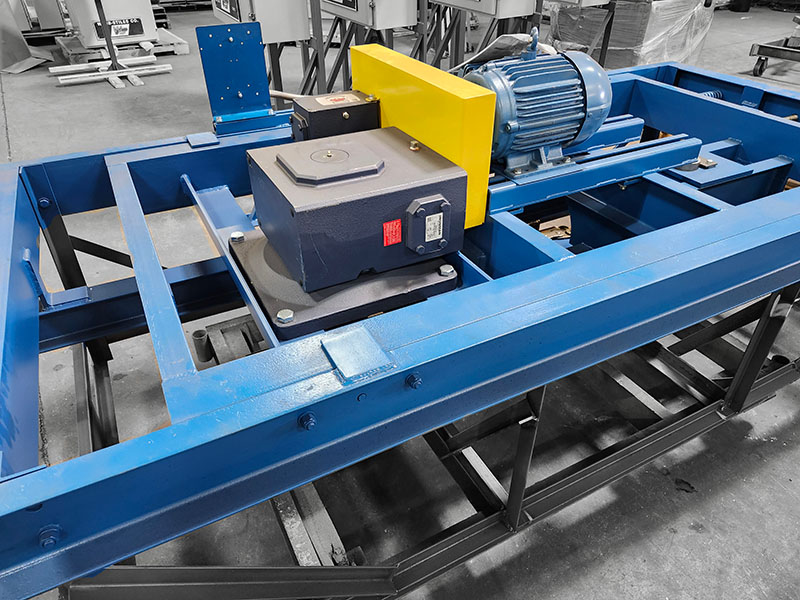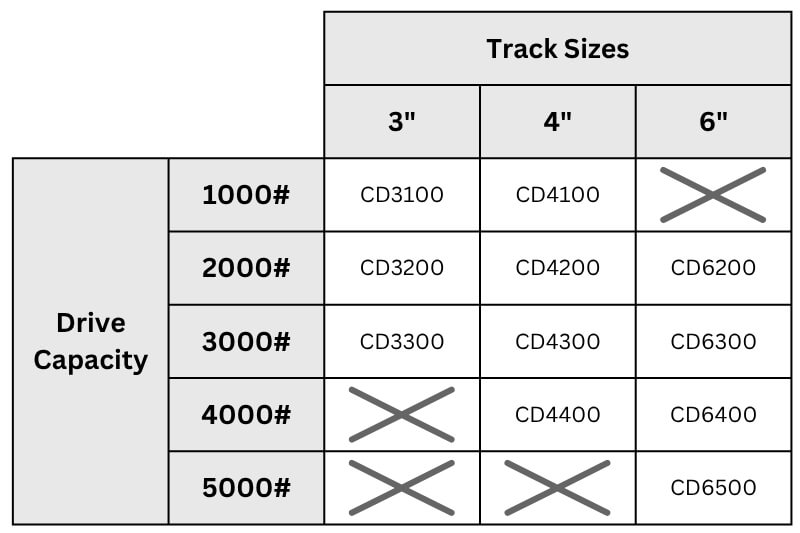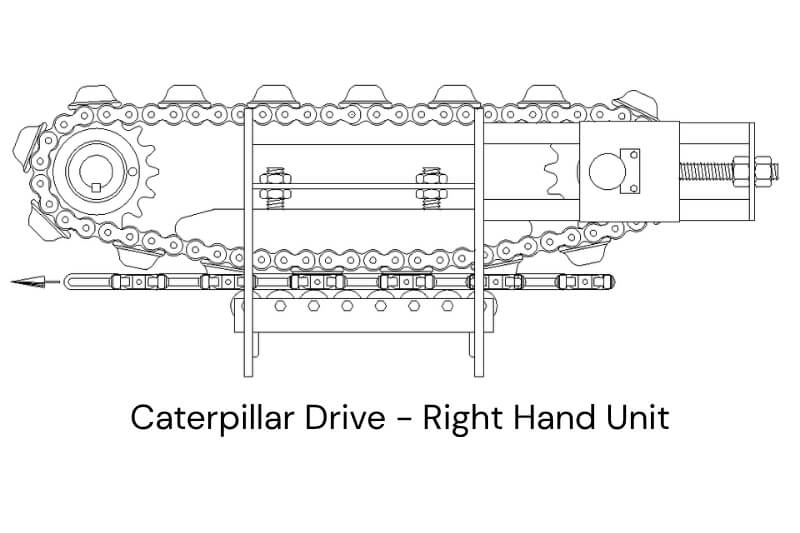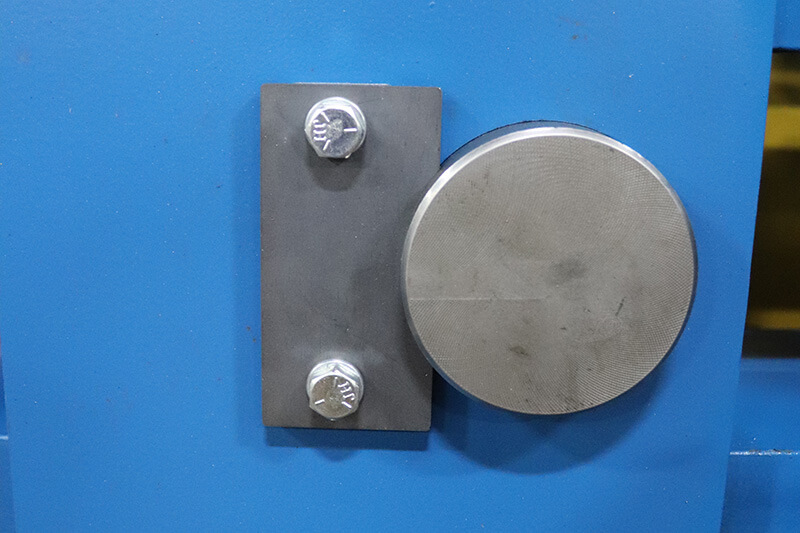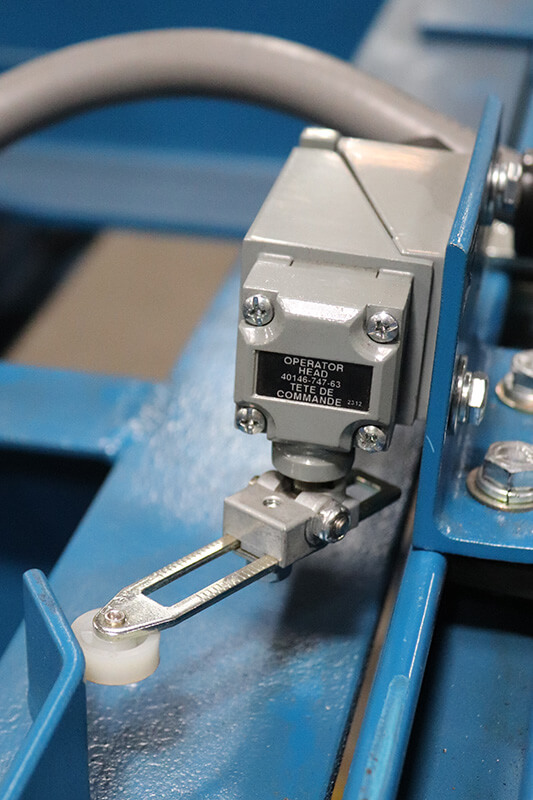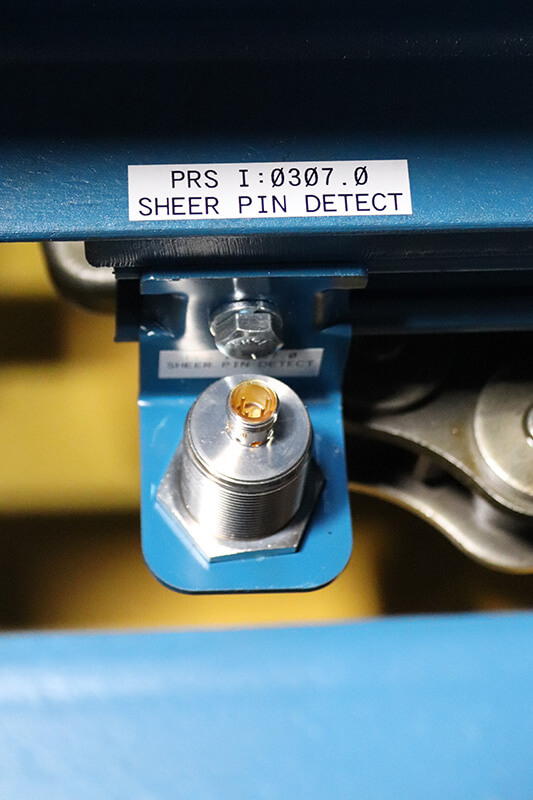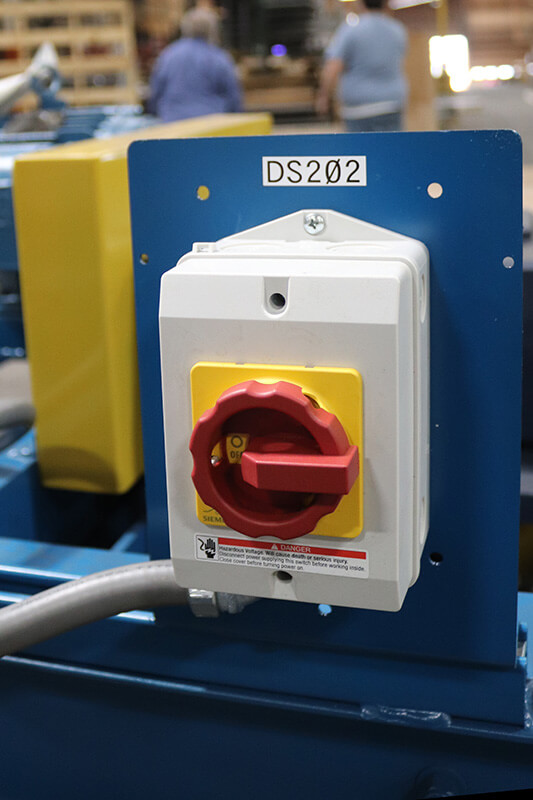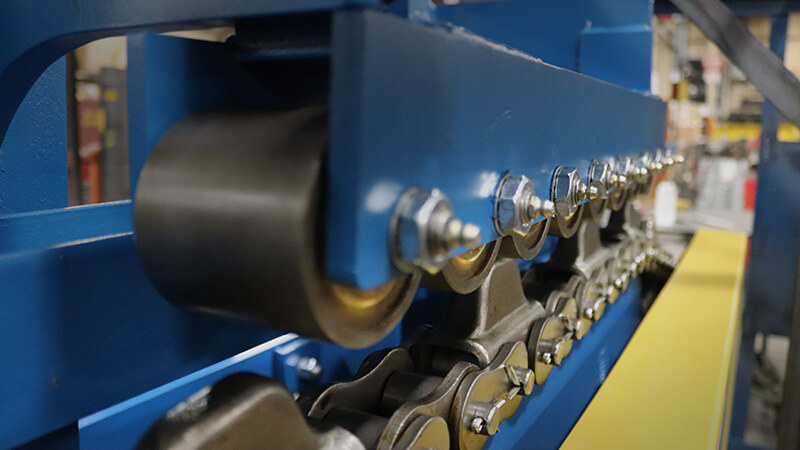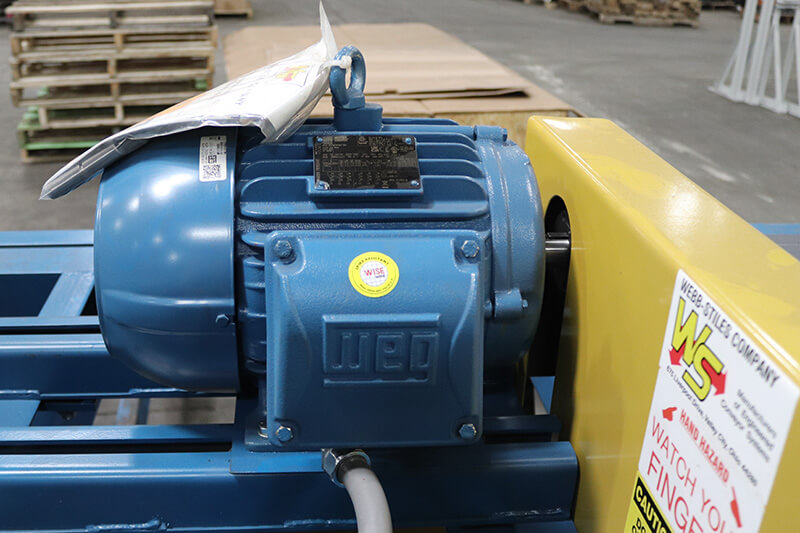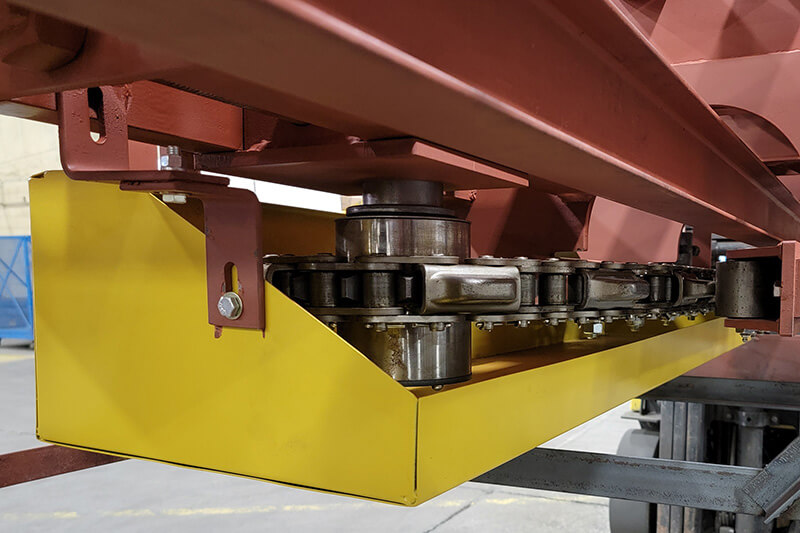Caterpillar Drives for Heavy-Duty Overhead Conveyors
Engineered for strength, smooth operation, and long-term durability
Get expert help selecting the right drive for your overhead system.
What is a Caterpillar Drive?
A caterpillar drive (also known as a cat drive) is a compact, inline drive system that engages the links of an overhead conveyor chain using a powered cat chain. Known for its strength and smooth operation, this drive style works well for systems with long runs or high chain pull requirements. Unlike sprocket drives, installers can mount caterpillar drives on any straight section of track. This flexibility supports various layout needs and simplifies drive take-up alignment.
How Caterpillar Drives Are Engineered
Load Capacity
Each drive matches the system’s specific chain pull requirement. Available models include 3”, 4”, and 6” track sizes, with load capacities ranging from 1,000 to 5,000 pounds of chain pull.
Webb-Stiles engineers each Caterpillar Drive to suit the track size and load demands of the overhead conveyor system.
-
3” drives are available for up to 3,000 pounds of pull and typically used in lighter-duty applications.
-
4” drives offer increased durability and support loads from 1,000 to 4,000 pounds.
-
6” drives handle the heaviest demands, up to 5,000 pounds, and are ideal for high-torque, high-weight applications.
Certain drive capacities are only compatible with specific track sizes. For example, 5,000# capacity is only available with 6″ track, while 1,000# capacity is not supported in 6” track. This selection ensures optimal performance, longevity, and alignment with the overall conveyor system design.
Right-Hand vs Left-Hand Assembly
You can configure drive assemblies in either right-hand or left-hand orientations. This setup refers to the side of the track where the gearbox mounts as the chain moves away from it. Choosing the correct orientation helps the motor and gearbox clear nearby structures and align properly with other system components.
Right-hand units place the drive gearbox on the right when facing the direction of chain travel; left-hand units place it on the opposite side. This distinction becomes critical during layout planning, especially when accounting for drive-side obstructions, floor space constraints, or operator access needs.
Both options are available in floating, fixed, and inverted frame styles to meet your installation and maintenance requirements.
Take-Up Sprockets
Take-up sprockets maintain proper chain tension on the caterpillar drive system. Their two-bolt keeper plate design makes removal fast and straightforward during maintenance. This setup streamlines servicing and helps preserve consistent chain performance.
The take-up assembly allows the drive chain to compensate for wear and thermal expansion over time, keeping the pins engaged with minimal slack. Maintaining proper tension is critical to reduce wear on the caterpillar drive and chain, minimize shock loading, and support smooth operation under load.
Each take-up sprocket is securely mounted using a hardened keeper plate and heavy-duty bolts, as shown. This design not only ensures stability but also simplifies inspection and re-tensioning during routine service.
Drive Sprockets with Shear Hubs
Every Webb-Stiles drive features a hardened sprocket paired with a shear hub and pin. This built-in overload protection ensures that the shear pin fails first—preventing damage to the gearbox, motor, or chain during a jam or sudden load spike. A hardened bushing supports the pin and maintains alignment, improving long-term performance.
This setup also simplifies repair: when a pin breaks, the drive can be serviced quickly without removing the full sprocket or gearbox assembly. Webb-Stiles includes this protection as a standard feature on all Caterpillar Drives, making the system safer and easier to maintain.
Frame Styles: Floating, Fixed, and Inverted
Webb-Stiles offers three frame styles to match your installation:
-
Floating Frame: Accommodates natural movement from chain tension or thermal expansion. A limit switch actively signals overload.
-
Fixed Frame: Bolts directly in place. The system detects overload using a shear pin and/or motor feedback.
-
Inverted Frame: Ideal when the motor must hang below the track—such as in inverted or in-floor conveyors.
You can choose any of these frame styles in both right-hand and left-hand configurations.
The components shown to the right actively monitor and protect the Caterpillar Drive system. They include overload detection sensors, position feedback devices, and power disconnects—all integrated into the drive frame for safety and serviceability.
Cat Chain
Webb-Stiles uses U.S.-sourced RC-160 Caterpillar Chain with 2″ pitch for consistent quality and long wear life.
Chain Details:
– 10-foot standard lengths
– Custom spacing available
– Raised drive dogs engage conveyor chain
Standard Configurations:
– 3″ Track (X-348): One dog every 12″ (6″ spacing optional)
– 4″ Track (X-458): One dog every 8″
– 6″ Track (X-678): One dog every 12″
A Webb-Stiles sales engineer can help determine the best layout for your system.
Constant vs Variable Speed Drives
You can configure drives for either constant or variable speed:
-
Constant Speed: These drives use a VFD-capable motor but exclude the controller. This setup works best when line speed stays the same throughout operation.
-
Variable Speed: These drives include a VFD controller, allowing flexible speed adjustments based on system demands. Most applications use this standard setup, which supports a 10:1 turndown ratio.
Webb-Stiles also offers 4000# models in direct-drive configurations. In these models, the motor connects directly to the reducer—eliminating belts and chains to boost efficiency and reduce maintenance.
Accessories and Their Purpose
You can add optional accessories to meet specific safety, control, and maintenance requirements:
-
Belt Guards: Prevent contact with moving components and block debris.
-
Finger Guards: Enhance safety at pinch points.
-
Drip Pans: Capture lubrication runoff and serve as backup guarding when finger guards aren’t used.
-
Encoders: Provide motor speed and position feedback for advanced control or PLC integration.
-
Optional Motor Brakes: Help stop or hold the load when the system powers down.
Handling High Chain Pull with Multi-Drive Setups
Long systems or applications with high chain pull demands often benefit from multiple drive units. Webb-Stiles engineers these systems with AC motors, Allen-Bradley controllers, and torque feedback to ensure balanced load sharing. You can install multi-drive units in phases, with options for both constant and variable speed control.
Benefits of Multi-Drive Configurations:
-
Reduce strain on individual gearboxes
-
Increase overall system reliability
-
Enable smoother starts and stops
-
Support synchronized or independent operation across track sections
Engineering Considerations:
-
Drives can be mounted inline or inverted to fit space constraints
-
Ideal for long track runs, high-weight loads, or elevation changes
-
Control logic, torque distribution, and take-up placement are optimized for consistent performance
Designed for Longevity and Minimal Maintenance
Webb-Stiles drives deliver long-term performance through durable, serviceable designs. We use oversized grease reservoirs, heavy-duty bearings, and precision-machined parts to extend drive life and reduce downtime. For over 50 years, we’ve maintained the same gearbox and layout to ensure compatibility—making replacement parts and full assemblies easy to install and maintain.
Downloads & Literature
Learn more about our Caterpillar Drive lineup, including frame styles, chain sizes, and multi-drive configurations.
Ready to Get Started?
Whether your system requires a single Caterpillar Drive or a complex multi-drive layout, our engineering team is ready to help design the right solution.

